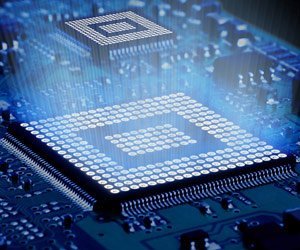Moving Beyond Legacy Digital Infrastructure
Computing infrastructure has undergone far-reaching changes in the last decade, with the move to the cloud and new software development paradigms. But the physical infrastructure itself (compute, storage, connectivity) must also change radically to support the new reality. Data centers, whether they are in the cloud or on premises, still face issues around space, density, complexity and agility.
We need new approaches, with designs that provide better scalability and reduced complexity, for both simplified operations and support for greater levels of automation.
What Next-Generation Digital Infrastructure Must Deliver
IT infrastructure must change to meet current and future demands. A new approach to flexibility is needed to deliver the agility and speed that are required by organizations. The physical design must incorporate the best capabilities of both blade and rack infrastructure in a single offering—no more having to choose. It must be fully modular, which calls for a “midplane-less” design that doesn’t put cabling limitations on how the infrastructure can be modified.
The physical infrastructure must also be future-proof, able to integrate new CPUs, GPUs, connectivity options, storage and physical interfaces as they are updated. Component technologies are evolving rapidly. For example, the 3rd Gen Intel® Xeon® Scalable Processors available today have enhanced AI and HPC capabilities that will power demanding workloads. In the future, many new capabilities will become available that IT will want to utilize. Another goal of updated infrastructure is ensuring that it’s efficient in terms of space and power, with simpler physical connections. This issue has been around for decades, but there is still much room for improvement, and the growing demand for additional infrastructure, whether it’s in the cloud or on premises, is exacerbating it.
Another goal of updated infrastructure is ensuring that it’s efficient in terms of space and power, with simpler physical connections. This issue has been around for decades, but there is still much room for improvement, and the growing demand for additional infrastructure, whether it’s in the cloud or on premises, is exacerbating it.
Building Hybrid Cloud Infrastructure for the Decade Ahead
Organizations that deploy hybrid environments gain the competitive edge by delivering a diverse mix of applications at greater scale. View this report to learn about the future of modern infrastructure and operational efficiency powered by Cisco UCS X-Series and 3rd Gen Intel® Xeon® Scalable Processors.
Download NowCisco UCS X-Series Modular System Delivers Future-Ready Digital Infrastructure
Cisco has incorporated all these key design points, and many more, in its new product offering, the Cisco UCS X-Series chassis. Its modular design delivers the best of blade and rack designs in a single, consistent form factor. Unlike older blade designs, the UCS X-Series offers compute nodes with several storage and bay availability options, as well as the ability to add non-compute nodes, previously possible only with rack systems. A good example of this is the UCS X440p PCIe Node. This node better supports AI, ML, graphic-intensive, and other demanding workloads by adding GPUs to an X-Series deployment.
The Cisco UCS X-Series is a 100% modular design, providing an entirely new level of flexibility. This flexibility makes it possible to better support new and demanding workloads, enable workload mobility, add capacity and incorporate new technologies. Some of the most important examples of improved flexibility in the Cisco UCS X-Series are:
- Expanded and enhanced local storage: Up to 6 drives can be configured on a compute node, and they can include NVMe, SAS, and SATA drives. It is also possible to put storage closer to the compute resource, where it is needed.
- Ability to easily add new CPUs: Compute nodes offer new levels of compute density, as well as the ability to add current CPUs such as the 3rd Gen Intel® Xeon® Processors, as well as future generations of Xeon when they arrive.
- Support for current and future generations of PCIe: PCIe has become a critical interconnect standard. With the new UCS X-Series design, support for both current and future versions of PCIe is possible. This includes support for PCIe 5 and 6.
- Multiple GPU support: A single compute node can support two GPUs, and additional GPUs can be added seamlessly. This provides more headroom and flexibility at a time when more workloads demand this type of compute resource.
- Support for heterogeneous technologies: Unlike older designs that demand component consistency and have limited options, the UCS X-Series allows IT to add non-compute nodes as desired.
- Unified Intelligent Fabric Modules (IFM): This unified fabric interconnects all devices in the system. It securely carries all traffic to the fabric interconnects, where it is separated into IP networking, Fibre Channel SAN and management connectivity. Cisco now offers 100G networking options for the most demanding applications.
- Improve cabling simplicity and efficiency: The IFM enables both networking and management with a single cable, reducing the complexity of the cable plant. Power distribution cabling is also simplified and reduced.
New Levels of Investment Protection
As organizations invest in digital physical infrastructure, they are finding out that it can be costly and disruptive. They want to protect their investment by choosing hardware with a long, useful life. This is the hallmark of Cisco’s UCS X-Series. Not only can future technology components be used, but future fabrics that include Generation 5 or 6 PCIe, CXL or silicon photonics can be integrated seamlessly as well. With better packaging for larger nodes, the need to upgrade chassis to support future high-power CPUs and GPUs is mitigated. Improved power and cooling efficiency allows room for additional nodes of every type—and the power to run them is available since the UCS X-Series has lower power loss levels. Liquid cooling can be added as future needs dictate. Get more details on the Cisco UCS X-Series Modular System.

